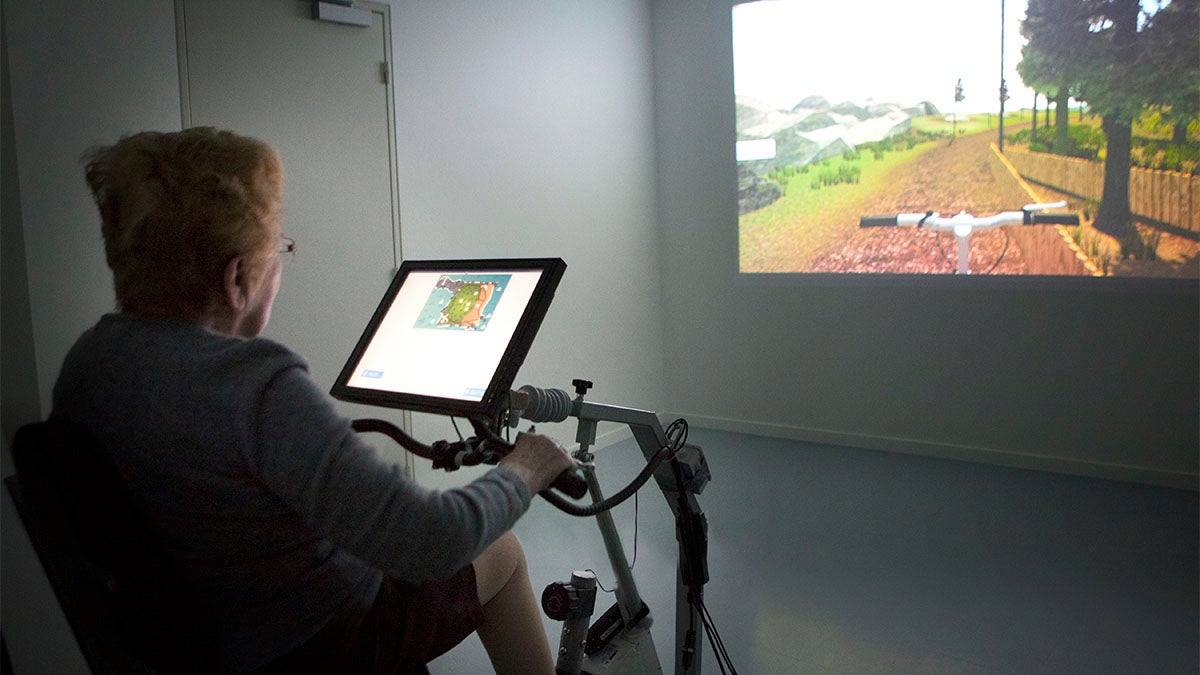Virtual reality takes you out of the gym to improve workouts

Exercising without the pain of physical exertion seems too good to be true, but researchers at Kent University in the United Kingdom are working on a way to make it happen with virtual reality technology. By modifying the perception of effort during an exercise, VR may be an effective tool for relieving pain.

Maria Matsangidou is the leader of the study and Ph.D. student at the Kent University School of Engineering and Digital Arts. She co-authored the 2018 report, “Psychology of Sport and Exercise,” that stated the brain, when preoccupied while in VR, is distracted from the potential pain caused by exercise.
Feelings of pain and the amount of effort being used are subjective, and they are calculated by various psychological factors. The study measured pain intensity, perceived exhaustion and private body consciousness (PBC). PBC is how well one is aware of internal body sensations.
The study observed 80 people with an average age of 23. There were two groups: one exercised with VR and the other without. Both groups were asked to do bicep curls in a plain room. The participants wearing the Samsung Gear VR headsets were placed in a virtual representation of the room, including a virtual arm and weight.
Results showed the VR group had 10 percent lower pain intensity after one minute, and its members took a longer time to reach exhaustion. PBC has been cited in previous studies as a large influence on pain experienced while exercising. However, in this study, PBC showed to have no effect on the results with the group that was using VR.
Why didn’t PBC have an effect in this study like it usually does? The report concluded that other than the brain simply being distracted, it’s also possible the cartoonish display was able to reduce anxiety, which increased the amount of time between the start of exercise and the time the brain receives pain signals. A third possibility is by having their actual body concealed study subjects weren’t able to see the physical signs of exertion — like popping veins — that have an effect on when the pain signals go off.
This knowledge is being implemented into professional teams’ training. The Dallas Cowboys have used VR in their offseason. Preparing for the Winter Olympics in South Korea, the U.S. Ski and Snowboard team used VR to familiarize themselves with the runs and terrain.
Companies such as Strivr have been profiting from this new finding. Strivr partners with the NFL, MLB and NHL, and its website says athletes have improved recollection of key concepts by more than 30 percent. The company’s VR environment allows athletes to practice anywhere, which accelerates the training regiment.
VirZOOM, in partnership with Life Fitness Lifecycle bikes, is another company working to bring virtual reality into the gym for the casual cardio gymgoers. Users work with Discover SE3 tablet consoles in order to turn “an indoor bike into an immersive workout experience,” according to VirZOOM’s website.
“It is clear from the data gathered that the use of VR technology can improve performance during exercise on a number of criteria,” Matsangidou said. “This could have major implications for exercise regimes for everyone, from occasional gym users to professional athletes.”
Nikole Tower is a senior journalism student at Arizona State University
Related Articles
Villanova's CAVE gives baseball team chance to hit one off Justin Verlander
Artificial intelligence changes how athletes and fans experience sports

